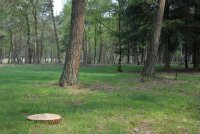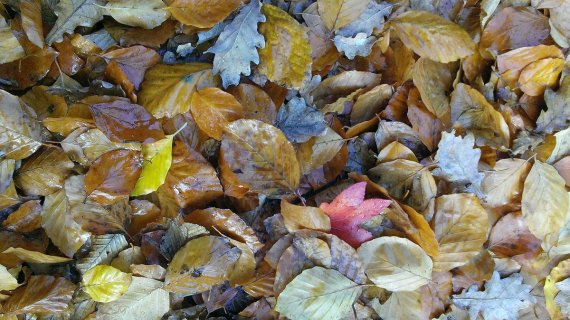© Roelof KleisIn a study for nature conservation organization Natuurmonumenten, the researchers compared the composition of the plants and soil close to the graves with that in more distant parts of the grounds. There was no difference at all, says Wim de Haas of Wageningen Environmental Research.
The establishment of natural burial grounds often meets with resistance from local residents, says De Haas. ‘People fear environmental damage, or they just find the idea distasteful. Environmental damage in the form of leaching of harmful substances was studied previously, and the harm caused by drug residues, amalgam fillings or artificial hips proved to be minimal. What we have studied now is the possible damage done to the vegetation.’
Those graves are not all dug at the same time. That makes a difference
Wim de Haas

© Wikimedia Relatives can mark a grave in Heidepol natural burial ground with a tree slab.
Heidepol, a natural burial ground of 17 hectares between Ede and Arnhem, has existed since 2012 and offers the possibility of a final resting place under a tree or in a meadow. The terrain can accommodate a maximum of 7250 graves. These are spread out across the grounds but outstanding spots are spared, explains De Haas. The density of the graves varies with the value assigned to the vegetation, from 200 to 1000 graves per hectare. At the places with the most graves, a maximum of one third of the ground can therefore be disturbed.
This does no permanent harm to the biodiversity, however. De Haas: ‘Those graves are not all dug at the same time. That makes a difference.’ Also, Heidepol is in the midst of a transition period, with former farmland and species-poor forest being transformed into flowering grassland, moorland and forest rich in biodiversity. The methods adopted for managing this have a much bigger impact than the digging of graves.
De Haas makes no claim that the study provides a definitive answer to the question of whether natural burials have a negative impact on nature. De Haas: ‘Actually you should monitor this continually. What is more, the situation is different at every natural burial ground. You need to do this kind of study for different types of vegetation and soil.’

